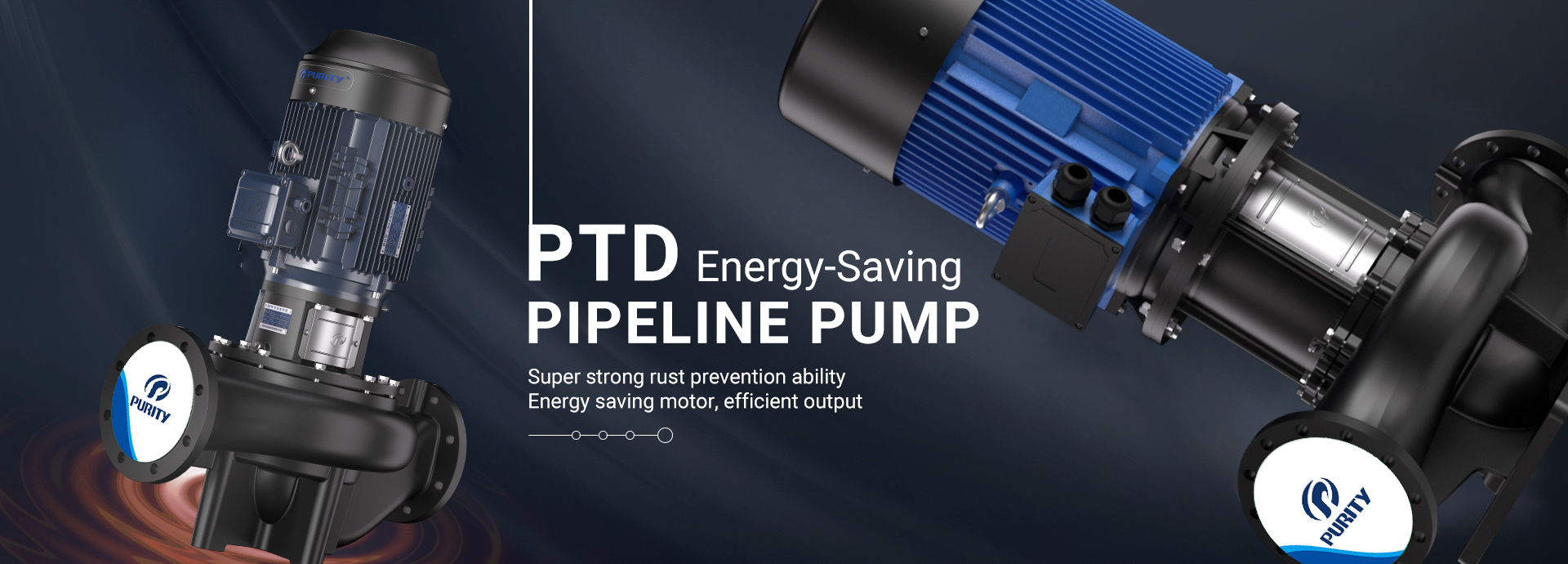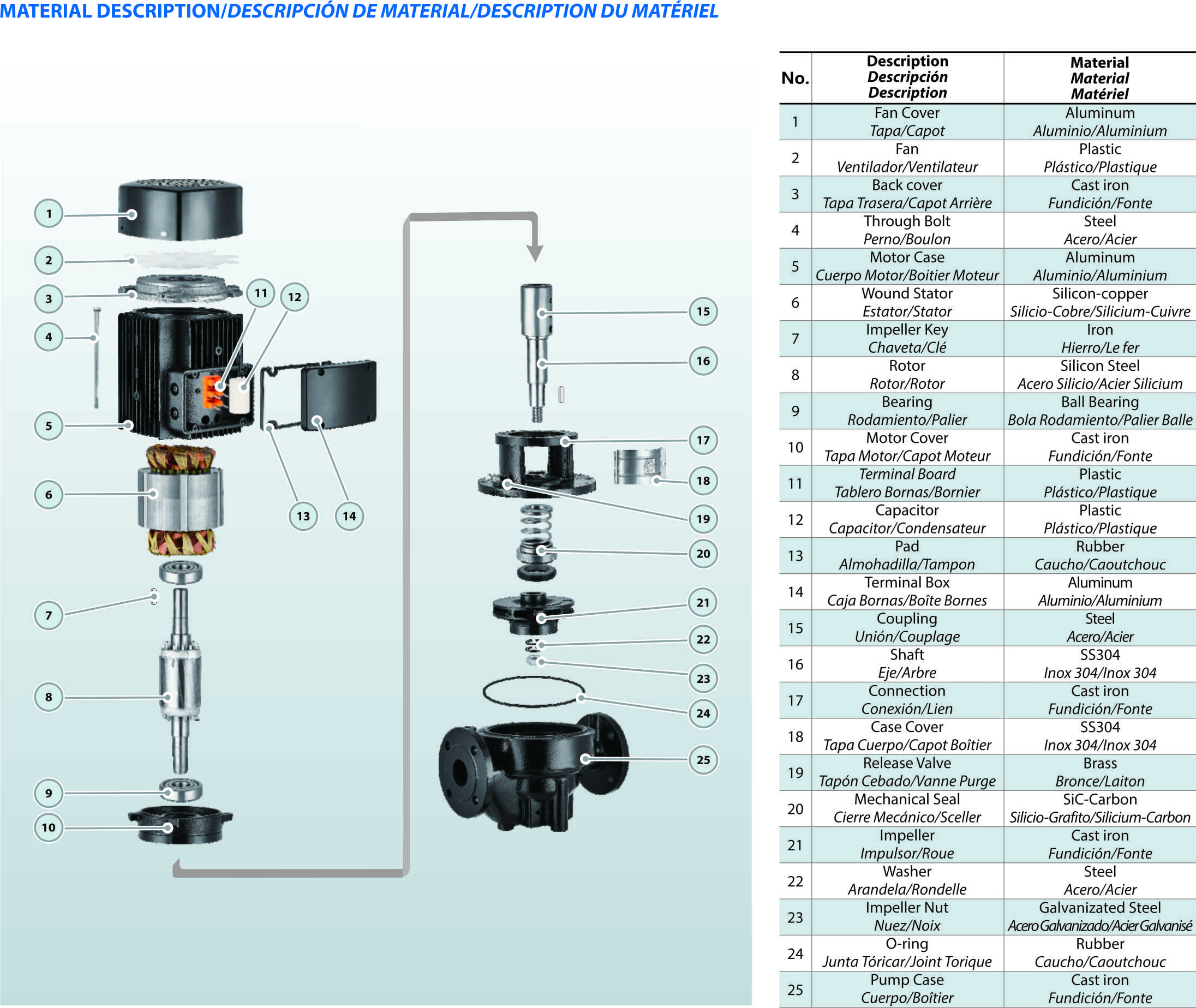Inline pumps are a vital component in various fluid transfer systems across multiple industries. These pumps, a type of centrifugal pump, are designed to move fluids through pipelines by converting mechanical energy into hydraulic energy, thereby generating the necessary pressure and flow to propel the fluid. Their unique design and functional advantages make them indispensable in applications ranging from water supply systems to chemical processing, HVAC systems, and wastewater treatment.

Figure |Purity Inline Circulation Pump-PTD
An inline pump derives its name from its installation method. Unlike other pump types that are mounted outside the pipeline and connected via hoses or connectors, inline pumps are directly integrated into the pipeline itself. This integration allows for a more compact and efficient design, simplifying both installation and maintenance processes. The pump's impeller is mounted directly on the shaft of the motor, which aligns with the inlet and outlet of the pipeline, creating a straight-line flow path.
This streamlined design offers several benefits. First, the compact nature of inline pumps makes them ideal for use in tight spaces, such as urban setups or industrial environments with limited room for equipment. Second, because the pump is part of the pipeline, the system experiences reduced frictional losses, leading to higher overall efficiency. Third, maintenance is simplified since the pump does not require extensive disassembly to access critical components.

Figure | Purity Inline Pump -PTD Parts Diagram
Inline pumps come in various types, each designed to meet specific operational requirements. The most common types include:
1. Vertical Inline Pumps: These pumps have a vertically oriented shaft, making them particularly suitable for applications where floor space is limited. They are commonly used in building services, such as HVAC systems, where they boost water pressure and ensure efficient circulation. Vertical inline pumps are also frequently employed in fire protection systems due to their reliable performance.
2. Horizontal Inline Pumps: With a horizontally oriented shaft, these pumps are often used in industrial applications and large-scale water transfer systems. Their design allows for easier access to internal components, making maintenance more straightforward. Horizontal inline pumps are typically chosen for their ability to handle large volumes of fluid over extended periods.
3.Close-Coupled Inline Pumps: These pumps feature a motor that is directly coupled to the pump, resulting in a highly compact design. This configuration is cost-effective and reduces the system’s footprint. However, the close coupling can make maintenance more challenging, as accessing certain components may require disassembly of the entire unit.
4. Split-Coupled Inline Pumps: In this design, the motor and pump are connected via a separate coupling. This separation allows for easier maintenance, as the pump can be serviced without removing the motor. Split-coupled inline pumps are often preferred in situations where frequent maintenance is necessary, or where downtime must be minimized.
5. Multistage Inline Pumps: These pumps are designed for high-pressure applications. They feature multiple impellers arranged in series, with each stage increasing the pressure of the fluid. Multistage inline pumps are ideal for applications such as boiler feedwater systems and high-rise building water supplies, where significant pressure is required.
Inline pumps are versatile and are used in a wide range of applications. In water supply systems, they ensure consistent pressure and flow, crucial for both residential and industrial settings. In HVAC systems, they maintain the circulation of hot or cold water, contributing to efficient temperature regulation. Chemical processing industries rely on inline pumps to handle corrosive or high-temperature fluids, while wastewater treatment plants use them to transport and process large volumes of water.
When selecting an inline pump, several factors must be considered to ensure optimal performance. The flow rate and pressure (head) requirements are critical, as an undersized pump will fail to meet demand, while an oversized pump will waste energy. The properties of the fluid being pumped—such as its temperature, viscosity, and corrosiveness—must also be matched with the pump’s materials to prevent premature wear or failure. Additionally, the operational environment, including space constraints and exposure to the elements, should influence the choice of pump type.
Routine maintenance is essential for ensuring the longevity and efficiency of inline pumps. Regular inspections for wear, leaks, and performance issues, along with periodic lubrication of moving parts, can prevent costly breakdowns. In environments with high levels of dust or debris, cleanliness is crucial to prevent contamination of the system. Safety protocols, such as disconnecting power during maintenance, should always be followed to protect personnel and equipment.
In terms of energy efficiency, selecting a pump with a high-efficiency motor and considering the use of variable speed drives can significantly reduce energy consumption. It is also important to operate the pump within its best efficiency point (BEP), where it performs most efficiently.
Inline pumps, with their diverse types and applications, are a cornerstone of modern fluid transfer systems. Understanding their design, types, and operational considerations is essential for selecting the right pump for the job, ensuring efficient and reliable performance. Whether used in industrial, commercial, or residential settings, inline pumps play a critical role in maintaining the flow and pressure of fluids, ultimately contributing to the smooth operation of countless systems worldwide.